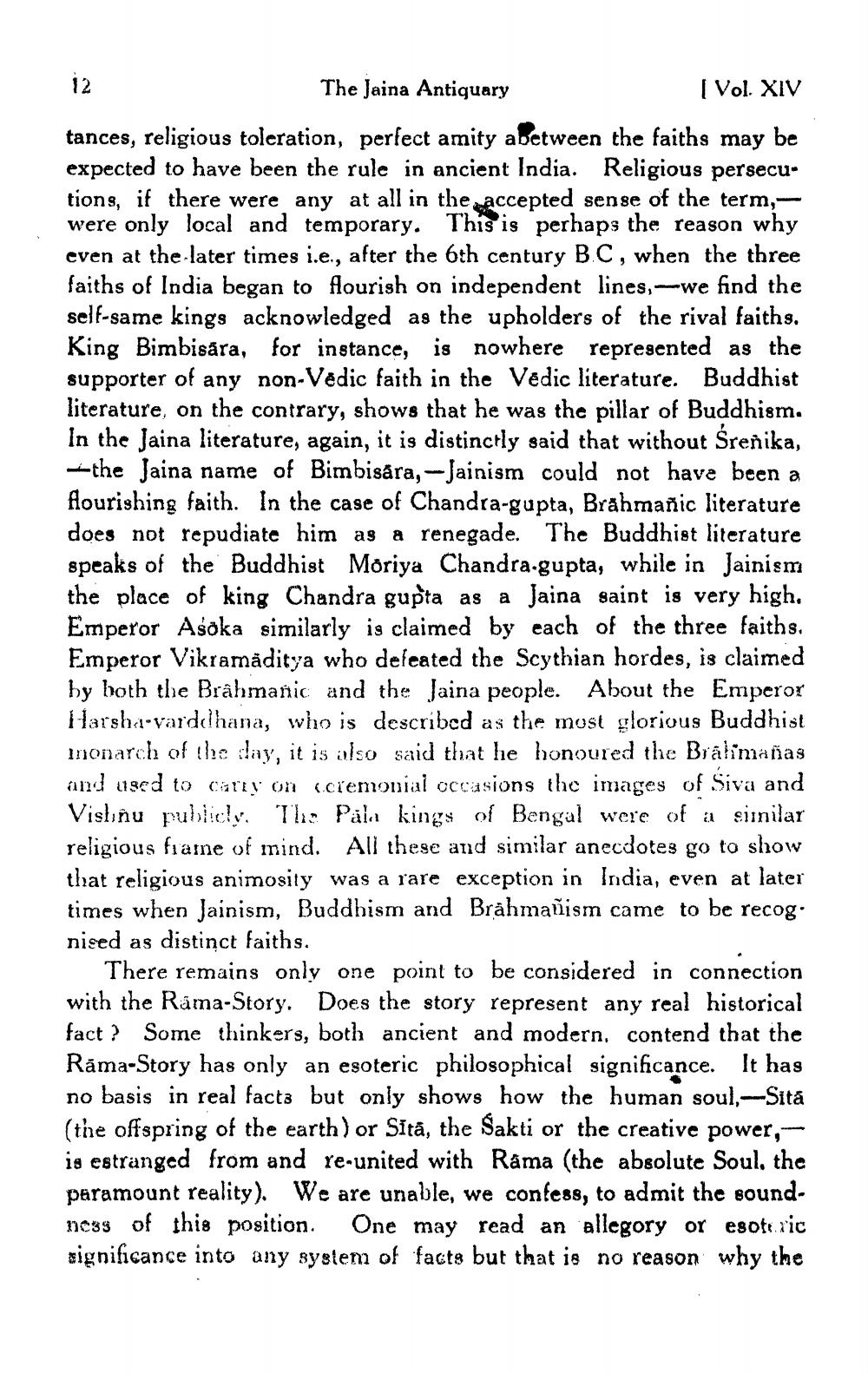________________
The Jaina Antiquary
[ Vol. XIV
tances, religious toleration, perfect amity abetween the faiths may be expected to have been the rule in ancient India. Religious persecu tions, if there were any at all in the accepted sense of the term,were only local and temporary. This is perhaps the reason why even at the later times i.e., after the 6th century BC, when the three faiths of India began to flourish on independent lines,-we find the self-same kings acknowledged as the upholders of the rival faiths. King Bimbisara, for instance, is nowhere represented as the supporter of any non-Vedic faith in the Vedic literature. Buddhist literature, on the contrary, shows that he was the pillar of Buddhism. In the Jaina literature, again, it is distinctly said that without Śrenika,
the Jaina name of Bimbisara,-Jainism could not have been a flourishing faith. In the case of Chandra-gupta, Brahmañic literature does not repudiate him as a renegade. The Buddhist literature speaks of the Buddhist Moriya Chandra-gupta, while in Jainism the place of king Chandra gupta as a Jaina saint is very high. Emperor Asoka similarly is claimed by each of the three faiths. Emperor Vikramaditya who defeated the Scythian hordes, is claimed by both the Brahmanic and the Jaina people. About the Emperor Harsha-varddhana, who is described as the most glorious Buddhist monarch of the day, it is also said that he honoured the Bralimañas and used to carry on ceremonial occasions the images of Siva and Vishnu publicly. The Pala kings of Bengal were of a similar religious frame of mind. All these and similar anecdotes go to show that religious animosity was a rare exception in India, even at later times when Jainism, Buddhism and Brahmanism came to be recog⚫ nised as distinct faiths.
12
There remains only one point to be considered in connection with the Rama-Story. Does the story represent any real historical fact? Some thinkers, both ancient and modern. contend that the Rama-Story has only an esoteric philosophical significance. It has no basis in real facts but only shows how the human soul,-Sita (the offspring of the earth) or Sita, the Sakti or the creative power,is estranged from and re-united with Rama (the absolute Soul, the paramount reality). We are unable, we confess, to admit the soundness of this position. One may read an allegory or esoteric significance into any system of facts but that is no reason why the




